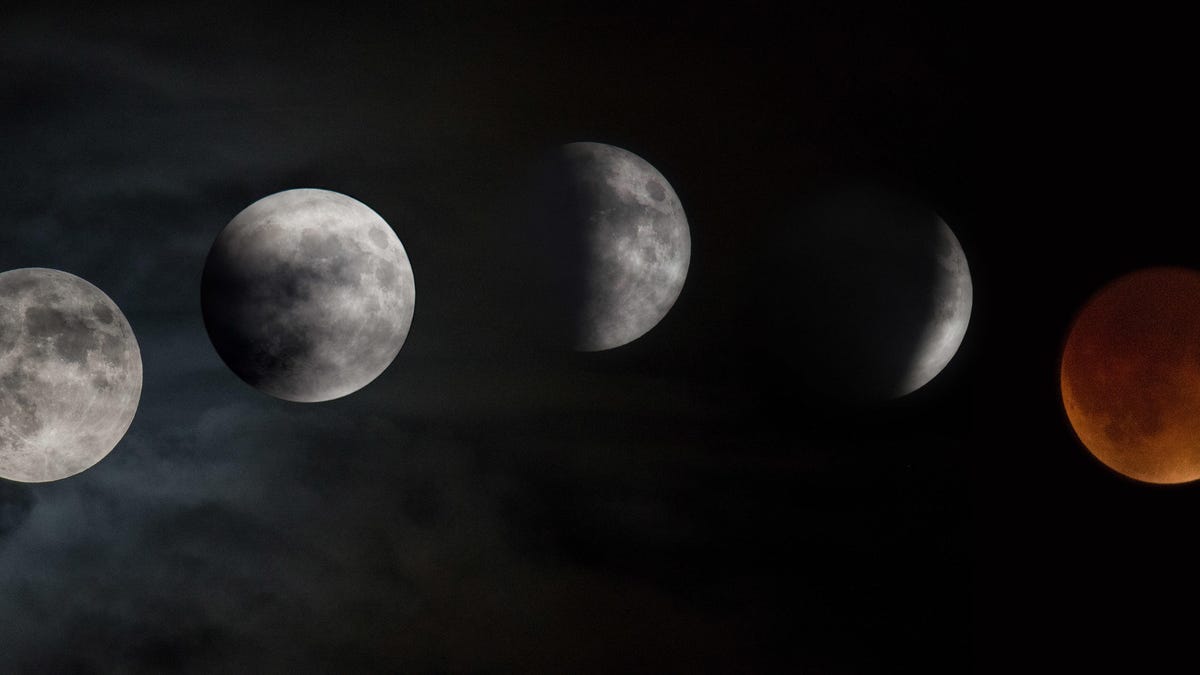Watch a lunar eclipse live to celebrate Apollo 11 launch day
A partial lunar eclipse will appear over a big chunk of the globe on Tuesday, July 16.

NASA caught sight of a supermoon lunar eclipse on September 27, 2015. The July 16 partial eclipse won't be quite this jaw-dropping, but it will still be beautiful.
It's almost like the cosmos knows we're about to celebrate a big space anniversary.
On July 16, 1969, NASA's Apollo 11 crew launched on the mission to land the first humans on the moon. Fifty years later, some of the planet will get to see a partial lunar eclipse.
The eclipse action will be visible in Africa, most of Europe, Australia and parts of Asia and South America. North America is out of the running for this one.
We're just a couple weeks removed from a spectacular total solar eclipse seen in Chile and Argentina. A solar eclipse happens when the moon casts its shadow onto Earth. On Tuesday, Earth will return the favor.
"The moon is full, moves into the shadow of the Earth and dims dramatically but usually remains visible, lit by sunlight that passes through the Earth's atmosphere," the Royal Astronomical Society said in a release on Monday.
UK watchers will need a clear view of the southeastern and southern horizon in order to spot the low moon during the eclipse.
If you can't witness the shadowy fun in person, then you can tune in online. The Royal Observatory Greenwich in the UK will livestream the eclipse starting at 2 p.m. Pacific.
The Virtual Telescope Project will also share a livestream of the eclipse from Rome starting at 1:30 p.m. Pacific on Tuesday. This should be a quite a view with the Roman skyline as the backdrop. And here's a bit of trivia: NASA astronaut Michael Collins, the Apollo 11 command module pilot, was born in Rome in 1930.
This may be the most perfect way to celebrate a moon-history milestone.

